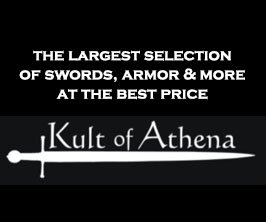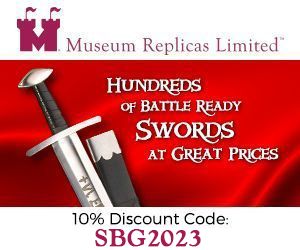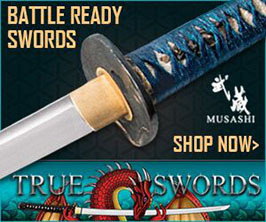Recent Articles
-
Sword Buyers Digest November Edition Out Now
Nov 01, 24 01:49 AM
Dotanuki Swords
同田貫
Dojo Pro Series, Ronin Katana
Dotanuki Swords 同田貫 (Torso Cutters) are a real battlefield style of Katana with exceptionally brutal cutting blades. Inspired by Lone Wolf and Son (see below) they are the default blade choice for all the blades made by Ronin Katana for their Dojo Pro series swords.
Historically these were no nonsense blades favored by battle hardened warrior during the turbulent and endless civil wars of the Sengoku Jidai, and in peace time had such a viscous reputation for raw cutting power that they were eventually outlawed under the Tokugawa Shogunate.
The name Dotanuki is often translated as a 'torso cutter' (i.e. can literally bisect someone clean in half). However the name actually traces its origins to a village in Higo province where the original founder of this sword making style, Oyama Kozuke no Suke, was born and operated his forge from.
His swords, and all the others in the same style made by other smiths that followeed were noted for an aggressive forward balance and thick, wide blade with a wide motohaba (the blade width at the habaki) to generate cutting power far beyond your regular shinogi zukuri Katana.
In addition to cutting power - they also had a very thick kissaki (tip) that swelled at the yokote to give it extra strength when attempting to pierce armor and could often puncture a hole where other blades would be turned aside.
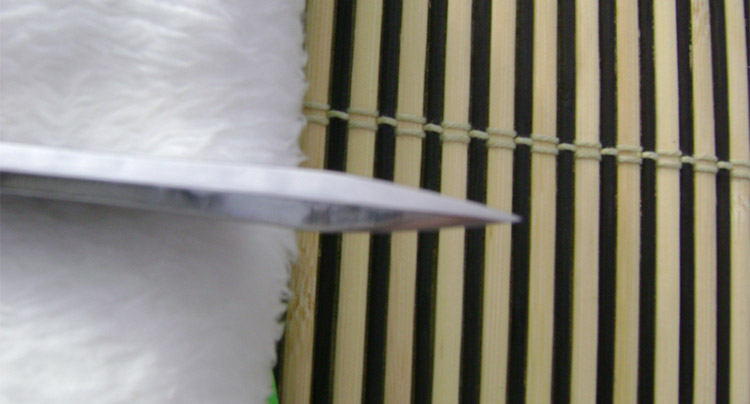
Apart from Ronin, they are also quite popular these days in Japanese made training swords (iaito) such as the one shown below.

Until the 1970s, this style was largely forgotten, until it was popularized by the manga, and later the TV series (and movie) Lone Wolf and Cub, where it was the hunted Ronin outlaw protagonists weapon of choice.
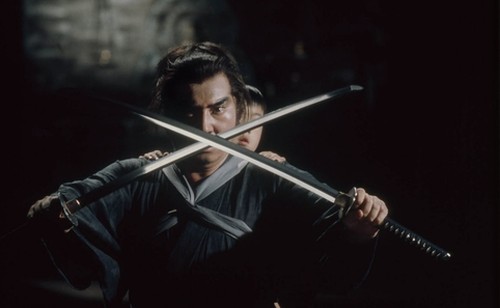 Ogami Ittō and his infant son Daigorō first introduced the Dotanuki Katana to the West
Ogami Ittō and his infant son Daigorō first introduced the Dotanuki Katana to the WestTo quote wikipedia..
|
Dotanuki swords quickly gained great popularity among the warrior class due to their superior cutting ability. The Dotanuki smiths cared little for aesthetics, but instead focused on strength, sharpness, and durability in the field. They were renowned for producing blades which would endure the harshest conditions, the most difficult battle field situations and survive to return to battle day after day, year after year. |
In many ways, Ronin Katana's choice to use this particular style of sword made perfect sense, what better blade geometry choice could there be for a monotempered beater? And indeed, even their earliest swords had a reputation for being tough, brutal cutters despite being made of the lowest acceptable grade for a functional sword, 1045 carbon steel..!
A normal Katana geometry, when made of 1045 carbon steel, is considered to be a bare bones blade. What Ronin did differently was have them hand forged in the Dotanuki style and fit them out with top quality fittings. The end results of their earliest swords speak for themselves..
Below, one of the early 1045 "Dojo" range, the Okinawa.
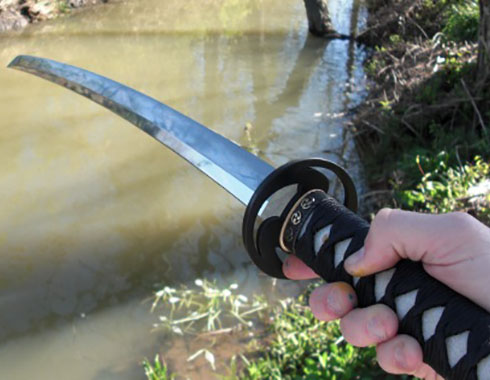
A 1045 blade doing this to a 2 x 4?
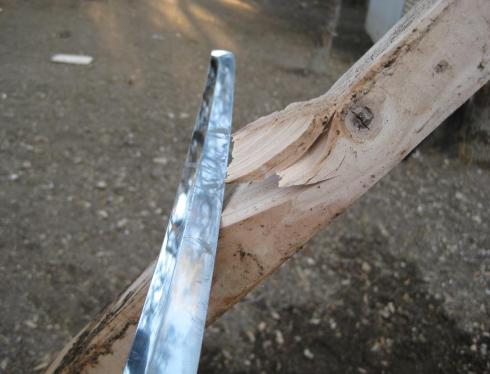
But what's interesting is that they look cumbersome, but they are not..
They are not ballerina's either of course, but if we compare the raw stats of a standard Ronin (2lbs 9oz, point of balance 5") and a Dynasty Forge Musha Katana (2lbs 8oz, point of balance 6") there isn't much between them - 1oz more in weight but with a closer point of balance to the handle (meaning in theory, they are faster and easier to wield)!
Naturally, these stats don't tell the full story - to know you need to actually hold on in your hand, but the best way I would describe them is somewhat neutral.
However, the story gets more interesting when these 1045 Dotanuki swords had their blades upgraded to the 'beater of choice standard', 1060 carbon steel..
Enter the Dojo Pro Dotanuki Swords
At 1045 they were tough. With 1060, they were terrifying..
But the upgrades didn't stop there, they also upgraded the saya (sheathe) using buffalo horn on the end cap, mouth of the saya and the kurikata knob that sits in the middle of the sageo (which was also upgraded).
These swords have been tested HARD under all manner of circumstances, sent away by the manufacturer with his blessings to try to destroy them and report the results, whatever they might be - including subjecting it to Rikugun Jumei Tosho testing (they passed) as well as many more impromptu testing - of which the video below is but a brief compilation.
VIDEO: Testing Compilation
A brick, baseball bat, bamboo, triple rolled tatami - and a full can of dog food, and more..
As such, with such savage and durable cutting blades mounted in fittings that are head and shoulders above the competition (real iron fuchi and kashira, iron tsuba, silk ito, buffalo horn - you name it) they are the complete package. I've even seen the treatment they get at the forge where they are made in Longquan - they are set aside from the other blades there and receive preferential treatment at every stage of the forging process..
VIDEO: Behind the scenes at the forge
During my visit to Longquan I was lucky enough to see how and where the are made.
Of course, once all is said and done - I would cannot say that they are perfect. They are not forged by master smiths. They aren't indestructible (no sword is) and they can't cut a falling silk cloth in mid air (that's a myth too).
But for under $300, if you can find a better monotempered beater sword - buy it.

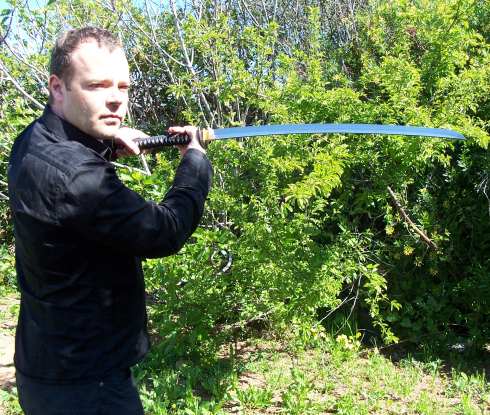
I hope this overview of Dotanuki Swords by Ronin Katana has been helpful. To return to Ronin Katana from Dotanuki Swords: The Dojo Pro Series by Ronin Katana, click here











